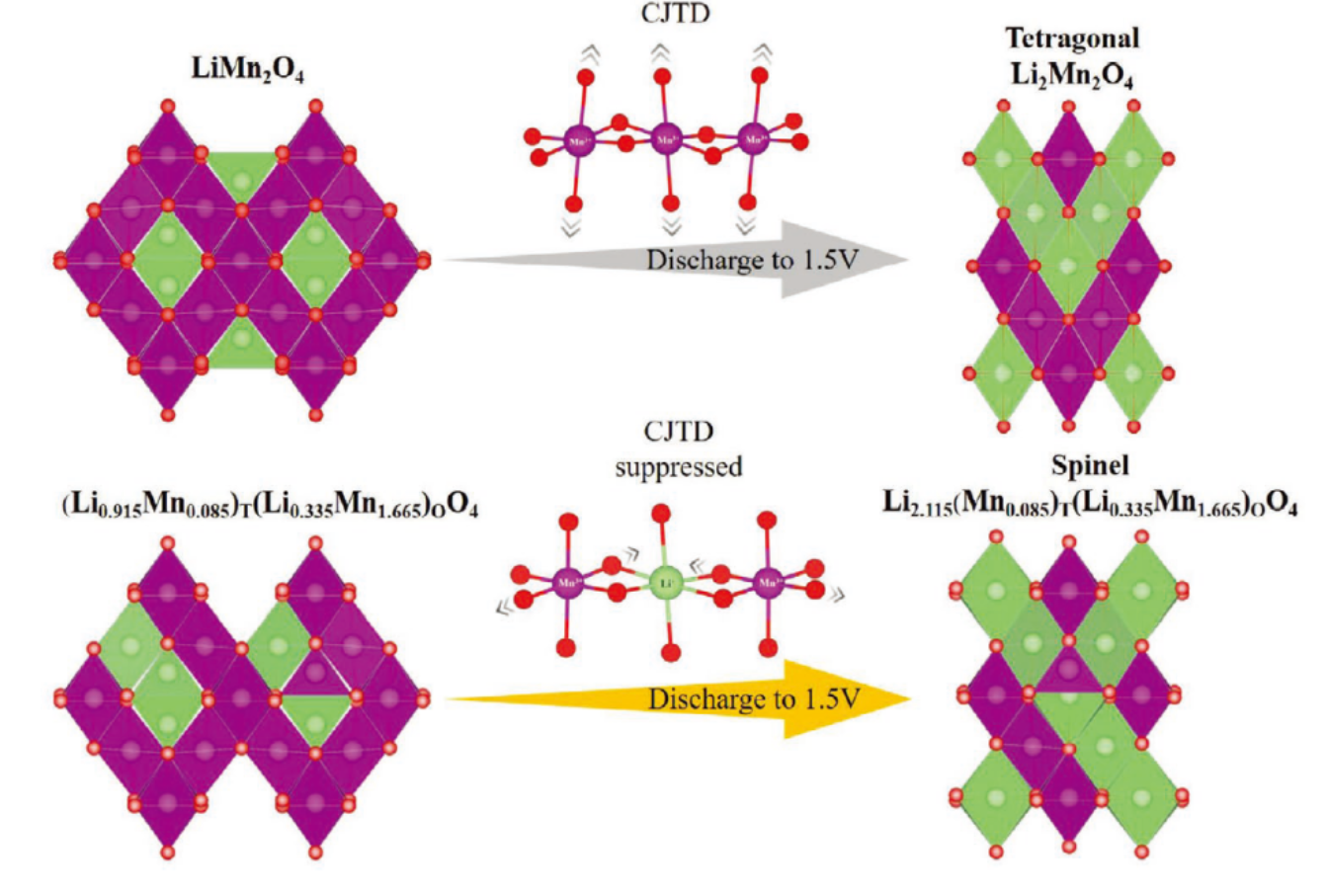New Materials Institute has made progress in manganese-based spinel cathode materials for lithium batteries
The cathode material is generally considered to be the decisive factor in determining the performance of lithium-ion batteries. Ideally, the positive electrode should provide high specific capacity, high operating voltage, low cost, superior safety and long cycle life within a wide operating temperature range to meet requirements such as hybrid electric vehicles, embedded hybrid electric vehicles and pure Requirements for applications such as electric vehicles. Among the existing cathode materials, manganese-based spinel lithium manganese oxide LiMn2O4 (LMO) has been widely used due to its high voltage (Li/Li+≈4.0V) and low cost. However, poor cycle performance and relatively low capacity greatly limit its wide application as a lithium battery cathode material. The reason is that poor cycle stability is directly related to the structural transformation caused by Jahn-Teller (JT) distortion, the disproportionation reaction of Mn3+ and the dissolution of Mn. The relatively low LMO capacity is because only one Li is embedded in the Mn2O4 spinel framework during discharge. Theoretically speaking, the second lithium ion is inserted into the octahedral vacancies in the LMO (below 3V) to form an excessively inserted Li2Mn2O4 that can double the capacity, but this is difficult to achieve because it will cause Mn4+ to be reduced to Mn3+. It causes more serious Jahn-Teller distortion, resulting in irreversible phase transition (cubic phase to tetragonal phase) and particle cracks during the cycle. Therefore, in order to obtain the double capacity and excellent electrochemical performance of LMO, the key lies in how to suppress the serious Jahn-Teller distortion in the process of excessive lithium insertion.

The inhibitory mechanism of the cooperative Jahn-Teller effect
Recently, under the joint guidance of Professor Pan Feng and Associate Professor Zheng Jiaxin from Peking University Shenzhen Graduate School, graduate student Zuo Changjian and PhD student Hu Zongxiang, etc. have proved the single Jahn-Teller distortion of Mn3+O6 octahedron in LMO through a combination of experiments and a large number of ab initio calculations. There is a synergistic effect between them, which is named as Synergistic Jahn-Teller Distortion (CJTD). This severe distortion will cause the Mn octahedron to be severely elongated in the c direction when excessive lithium is inserted, resulting in phase transition and cracks. The reason why it is difficult to obtain excellent electrochemical performance under low pressure. At the same time, this work further reveals that cationic disorder (the replacement of Li at the Mn site and the inversion of Li/Mn) can inherently inhibit CJTD in the Mn3+O6 octahedron. Because the cation disorder can destroy the symmetry of the Mn3+ arrangement, thereby destroying the correlation of the distortion of a single JT center, and preventing the Mn3+-O bond from twisting in one direction. Due to the suppression of CJTD, the original octahedral vacancies in the spinel LMO are activated and can be used as additional Li+ storage sites, thereby obtaining double capacity in the micron-sized LMO and having good reversible cycle stability.
High quality graphite manufacturer
If you need graphite powder, please feel free to contact: sales@graphite-corp.com







